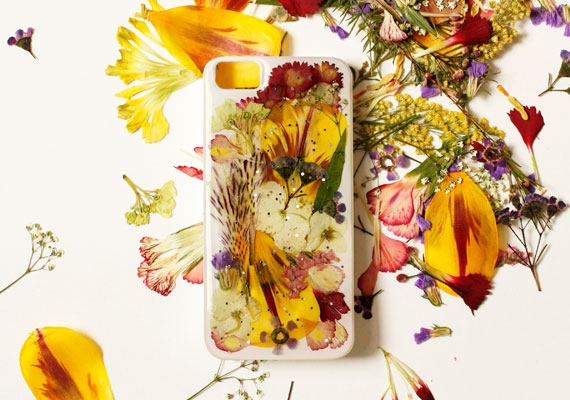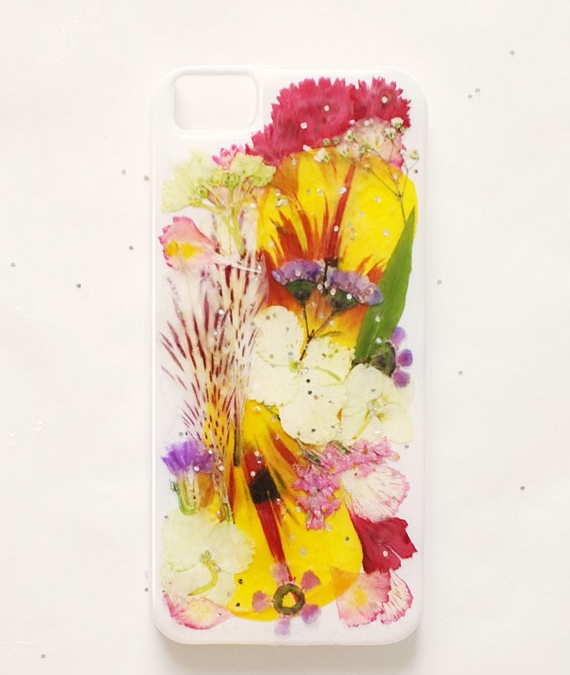How to Make Pressed Flower Phone Cases









You'll Need
To create your pressed flower phone case, gather the following materials:
- Pressed flowers and leaves
- Sole-coloured plastic phone case
- Colourless glue
- Epoxy encapsulant
- Sparkles in bulk
- Wood stick
- Acetone
- Cotton bud
- Scissors
- Sheet of pergament paper
Instructions
First of all, think about how your drawing should look. Spread dried petals and inflorescences on the surface of the plastic, trying several combinations. Remember that the thickness of the flower layer should not exceed 1.5 mm; otherwise, it will be difficult for you to evenly coat it with a sealing resin.
When the result of the “fitting” seems satisfactory to you, take a picture of the composition so as not to confuse the arrangement during the work.
Putting the decor elements aside, squeeze a little glue on the largest flower and gently stick it to the right place. After that, glue all the other petals and, if desired, complement the composition with sparkles. Keep in mind that when coated with resin, the herbarium fades slightly and becomes translucent; therefore, it is better to place the lighter parts under the darker ones, not vice versa.
While the parts are drying, dilute the sealing resin with water in a 1: 1 ratio. Act in strict accordance with the instructions on the package!
When the solution is ready, slowly pour a little on the center of the composition and evenly spread it over the entire surface with a wooden stick. Ensure all flowers and the free surface at the edges are completely covered. Carefully blow out any air bubbles, if present.
Try not to overdo it with the amount of resin to avoid overflow over the edge of the work surface. In our case, it is better to be cautious and use less than to pour over—adding the solution is easy, while removing excess can be quite difficult.
Drying the case will take about 2 hours. During this time, you must monitor the state of its surface; if the liquid starts to drain around the edges, it must be immediately cleaned with acetone and a cotton swab. If necessary, after complete drying, you can apply another layer of the solution.
